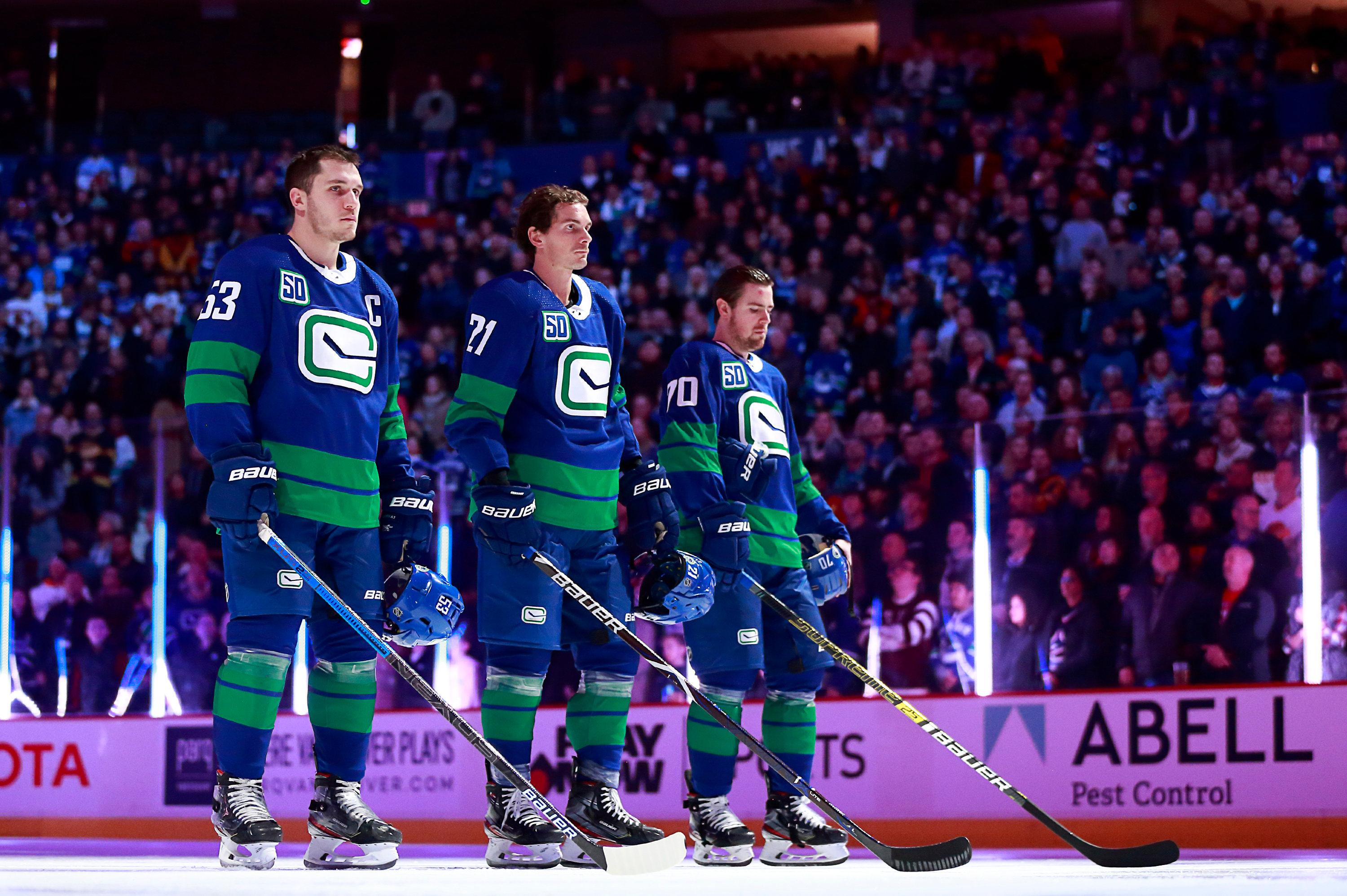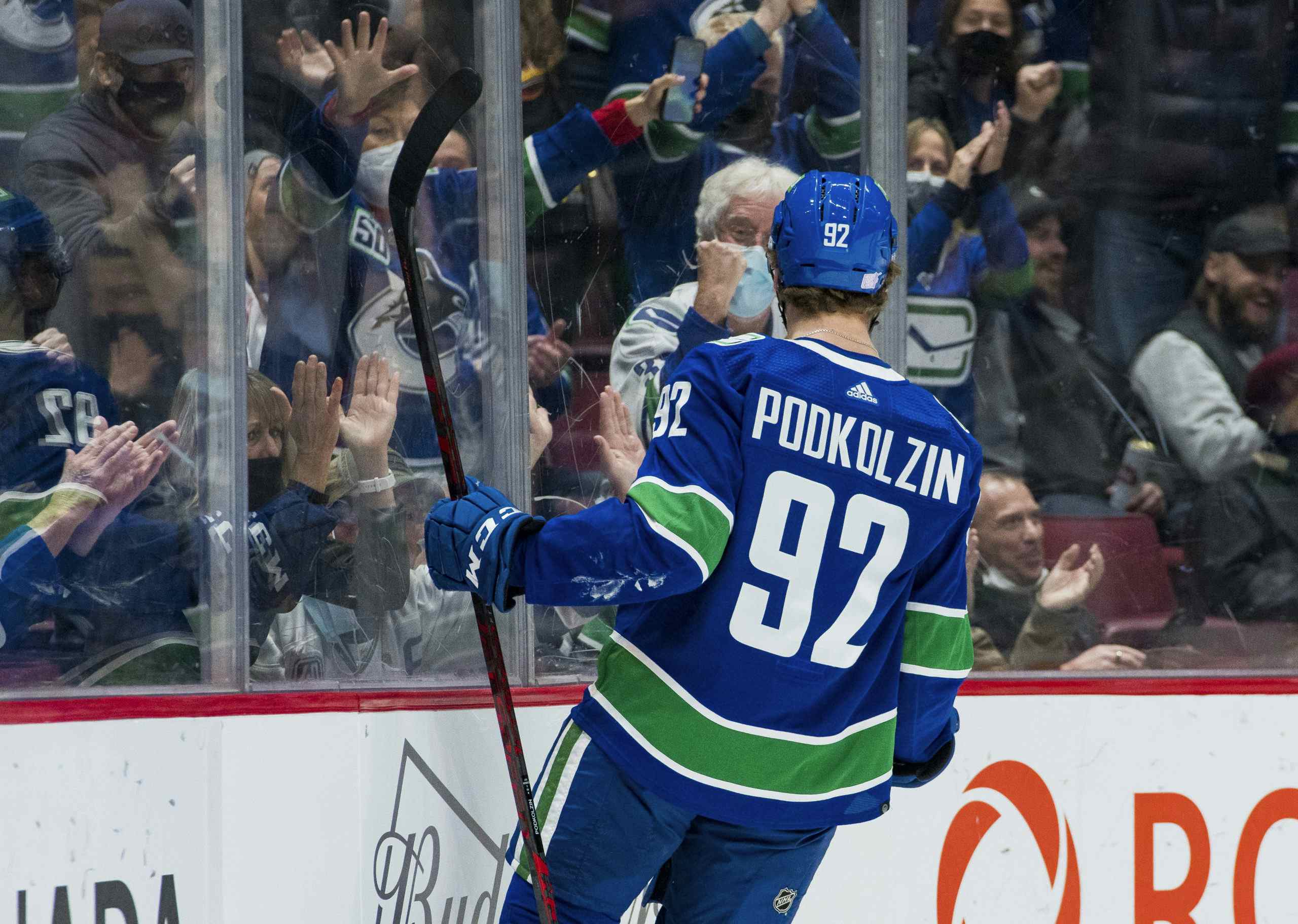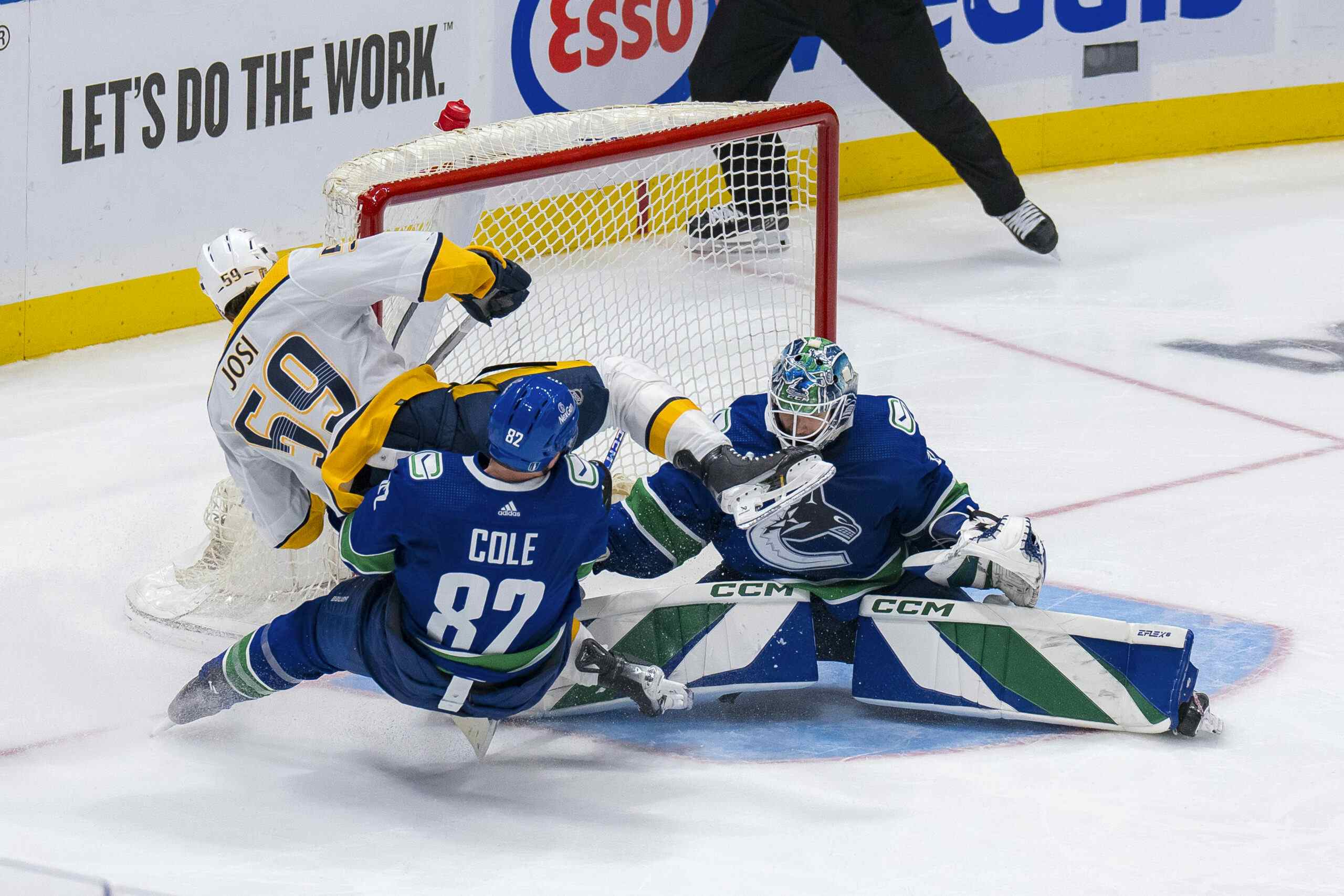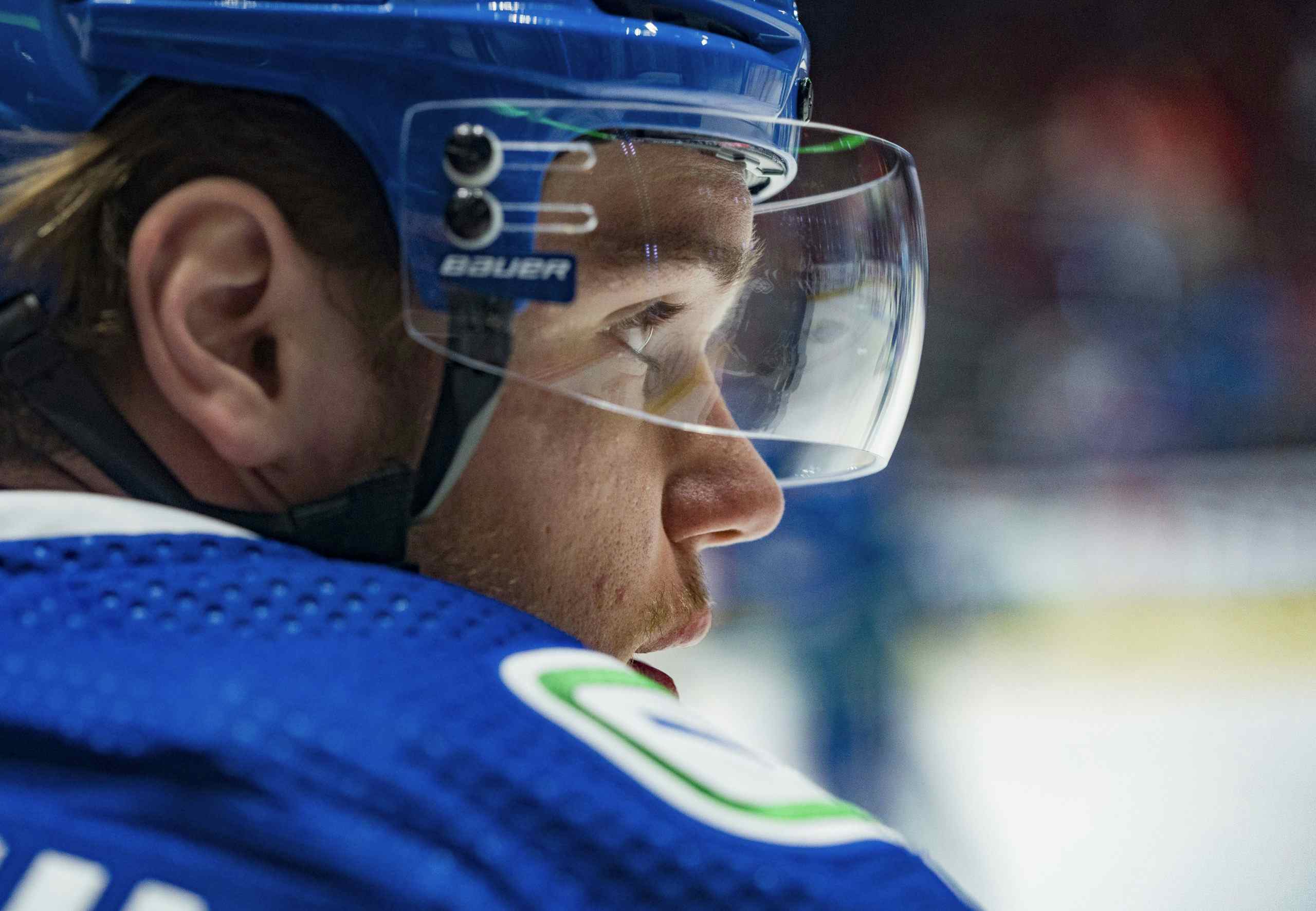Loui Eriksson was the Canucks’ least engaged and productive forward of the 2020 playoffs, and he’s signed for another two seasons

By Kevin Wong
3 years agoTo say that Loui Eriksson’s performance in the 2020 Stanley Cup Playoffs was a disappointment would be a massive understatement. He vanished.
Vancouver Canucks fans have, at this point, become accustomed to the idea that Eriksson will never be able to deliver anywhere near the quality of play expected out of a player carrying a $6-million AAV cap hit. When the team signed him to a six-year deal in 2016, the belief was that he could provide an adequate degree of scoring support. He had just completed a 30-goal, 63-point season with the Boston Bruins, and most of his goals were generated from within the crease region.
“Loui is an excellent two-way forward, an elite scorer and playmaker with great defensive instincts… He is an accomplished player who helps our team now and in the future as a leader and role model for our young players to follow. We’re excited to have Loui join our team and help us compete every night.” – Vancouver Canucks general manager Jim Benning, July 1, 2016.
At the very least, playing with Henrik and Daniel Sedin for the first two years would have been a theoretical, short-term recipe for success. The trio had, after all, shown some apparent degree of chemistry with Sweden’s national team, and Eriksson’s net-front contributions seemed like a suitable match for the down-low style that they played.
The experiment failed.
In March 2019, Canucks general manager Jim Benning stated, “When we signed him, we expected him to be a consistent 20-goal scorer… He hasn’t done that. That part, that’s been disappointing.”
Since joining the Canucks, Eriksson has regularly been associated with Bo Horvat’s line, which is exactly where he played in the 2020 playoffs. He was a healthy scratch in the opening match against the Minnesota Wild on August 2, but after Tyler Toffoli’s injury in that game, a vacancy appeared in the team’s top-six forward group. Brock Boeser was switched to Elias Pettersson’s line. Eriksson, meanwhile, was assigned to Horvat’s wing alongside Tanner Pearson.
During the 2019-20 regular season, Loui Eriksson scored just six goals and 13 points in 49 games. All thirteen of his points involved contributions from either Horvat or Pearson. Nine of those thirteen points, in particular, involved Horvat. They played approximately 35 of Eriksson’s 49 games together in 2019-20. Thus, there was a strong sense of familiarity between these three.
Over the course of his ten playoff games, Loui Eriksson averaged 15:56 of ice time per match. He also logged the sixth-most even-strength time on ice among Canucks forwards, 13:45 per game.
He scored zero points during the playoffs. In fact, he was just one of two regular Canucks forwards, the other being Adam Gaudette, not to score any points during the 2020 playoffs. Brandon Sutter scored six points; Tyler Motte scored five; Antoine Roussel recorded four; Jake Virtanen tallied three; Jay Beagle notched two.
Bo Horvat, Eriksson’s own linemate, scored a league-leading ten playoff goals. Eriksson, however, contributed nothing to his team’s overall production, and upon Toffoli’s return in Game Two against Vegas on August 25, he once again found himself in the press box.
Below is footage from his performance in Game Six against the St. Louis Blues, which we will use to further discern the problems with his game.
Loui Eriksson’ Game Six Performance vs STL (Aug. 21, 2020):
One can not help but notice just how slowly Eriksson moves the puck. There are numerous instances in our footage when he gains control of it in his own end, but then decides only to chip it into the neutral zone or guide it in the general vicinity of a teammate while not executing a tape-to-tape pass. He makes low-percentage plays that do not advance the Canucks’ attack and instead give the opponent chances to regroup with possession of the puck. He does not offer any significant degree of transition ability as far as puck distribution is concerned.
Eriksson hustles with an adequate degree of effort at both ends of the ice. However, once he is near the opposing puck carrier, he does not then engage aggressively enough with his stick or his body. His stick checking is often passive, and he does not force the opponent to battle for possession. When there are opportunities to poke the puck away from the opponent, he hesitates and provides them with too much space to maintain control.
As a result, his average number of takeaways per 60 minutes of ice time in the 2020 playoffs was lower than that of any of the other regular Canucks forwards. He recorded just one takeaway over a span of ten matches, an average of 0.37 per 60. The only regular roster member with a lower takeaway average was Alex Edler, but Edler’s position excuses him to some degree because his style of play as a blue-liner involves eliminating the opponent from the play and letting his defence partner retrieve the puck.
Loui Eriksson, as a forechecker, is expected to pressure the opponent and generate opposition turnovers, especially in the offensive zone. This does not occur on a regular basis. He utilizes his frame to tie up the opposing player and to impede them, but he does not often engage to the point of being able to win his battles. He can sometimes free the puck for a nearby teammate, but he needs significant support. Eriksson was the Canucks’ least physical forward and the second-least physical among the team’s regular contributors. His five hits in ten games equated to 1.88 hits per 60. Of the Canucks’ regular skaters, only 5’10”, 170-pound Quinn Hughes threw fewer hits per 60 minutes than Eriksson.
We can also gain a sense of Eriksson’s lack of engagement by comparing him to the team’s other defensive forwards. He and Tyler Motte, one of the Canucks’ best playoff performers this year, were ranked at entirely opposite ends of the takeaway and body-checking categories. Both Motte and fellow defensive player Brandon Sutter recorded very high takeaway numbers — 3.92 and 2.98 per 60, respectively. Motte averaged 14.09 hits per 60, while Sutter recorded a respectable average of 4.97.
Eriksson, on the other hand, epitomized passivity on the defensive side of the puck during the 2020 playoffs. His ineffectiveness on the forecheck, lack of point production, and inability to transition the puck up the ice indicate that little remains of Eriksson’s offensive potential.
Still, he has an adequate sense of defensive positioning and was only on the ice for four even strength goals against. He logged 20:54 of TOI on the penalty kill, fourth-most among Canucks forwards behind Motte, Jay Beagle, and Sutter, and was on for just one powerplay goal against. However, the Canucks also only scored four even-strength goals when he was on the ice.
Furthermore, for a player who spent significant time in the team’s top-six rotation, his Unblocked Shot Attempts Percentage of 42.5% was the lowest among the top-six forwards in the ten games that he played. He did not play in six of the seven matches against the Vegas Golden Knights when the opponent severely out-shot the Canucks. Hence, we have only considered the portion of games in which Eriksson participated. Bo Horvat recorded a USAT% of 47.2% during the span of games Eriksson played; Tanner Pearson recorded a percentage of 46.5%.
In Game Five against St. Louis when the Canucks desperately shuffled Jake Virtanen to the Pettersson line and moved Eriksson off of the Horvat line in favour of Boeser, Loui Eriksson recorded the forward group’s only sub-40% USAT%: a mere 37.5% in 15:01 of TOI. Every other Canucks forward in that game recorded a percentage of at least 46.0%.
During the Canucks’ September 2020 post-playoff address, general manager Benning stated his dissatisfaction with Loui Eriksson’s performance and hinted that talks were being held about the player’s future with the club.
By Game Two of the Vegas series, the coaching staff effectively deemed that Eriksson did not belong anywhere in their lineup. He played in 10 games and was scratched for seven.
Loui Eriksson has two more years remaining on his $6-million AAV contract. As of 2020-21, its current no-trade clause will be downgraded to a modified no-trade clause that allows him to block trades to fifteen teams of his choice. The Canucks should explore every possible avenue to rid themselves of his cap hit. With so many crucial impact players needing to be re-signed this year and next, that extra cap space would make a world of difference.
Grade: D-
Recent articles from Kevin Wong
- Loui Eriksson was the Canucks’ least engaged and productive forward of the 2020 playoffs, and he’s signed for another two seasons
- Brandon Sutter was among the Canucks’ best playoff back-checkers, but his cap hit remains a hindrance
- Alex Edler’s defensive work at even strength in the playoffs was crucial, but his special teams play suffered





